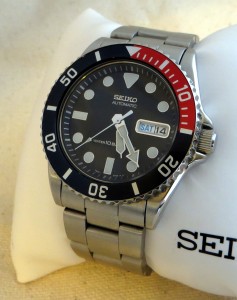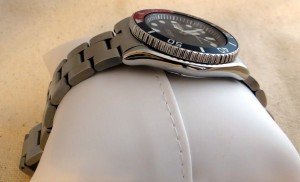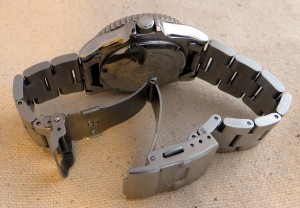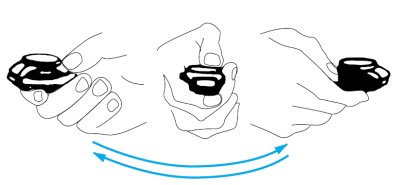One way to make a good watch into a great watch is to upgrade the bracelet. A watch I really love is my Seiko Pepsi. It is one of the first watches I purchased and looks awesome on the wrist. The downside is that is came on pretty flimsy folded link bracelet. It looks okay, with a brushed top and polished sides, but it rattles, squeaks, and sometimes pulls hairs. It is also a complete bear to take extra links out. Shame, really, the actual watch is pretty fantastic.
For the past few years, this have had this watch mostly on leather or NATO straps, but to get the original submariner feel to it, the watch deserves a heavy, quality bracelet. So, I decided on an “oyster” style bracelet. It matches what originally came on the watch, and closely mimics the modern bracelets used on Rolex submariners. For a non watch collector, spending $40 to $50 on a bracelet seems crazy, but when it is just a fraction of the price of a new, quality watch, it is worth it. To put it all in perspective, a single link on a solid gold watch costs over $250!
Putting the bracelet changed the whole feel of the watch. From too heavy at the watch, to well balanced. The squeaks and rattles went away, and the whole watch now has a very solid, expensive feel to it. The whole bracelet is brushed, but that’s okay in my opinion. It is easy to re-size and moves well with my wrist. The only compromise I had to make was is I had to use the original end links that came with the watch, the ones that were included were intended for Seiko SKX real diver’s watches, not this diver’s style, SKA.
The deployant is push-button with safety clasp. The bracelet has 3 adjustment holes. The overall fit and finish are very good and truly change an ordinary watch to an amazing watch. I wish the end links were solid, but, for the price point, it was perfectly acceptable. The ability to upgrade a bracelet is by no means limited to diver’s watches, you can just as easily update a dress watch is a solid bracelet or fine leather, or take a casual watch and make it dressy. Try it if you want to save some money, but want a whole new look.






